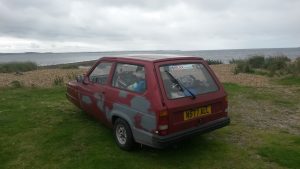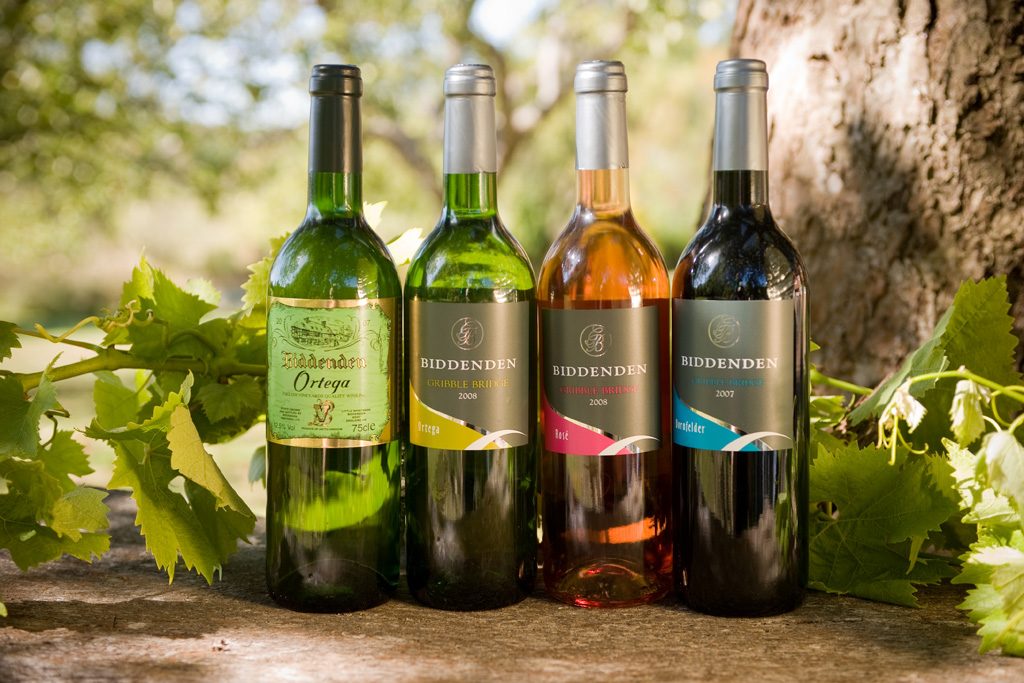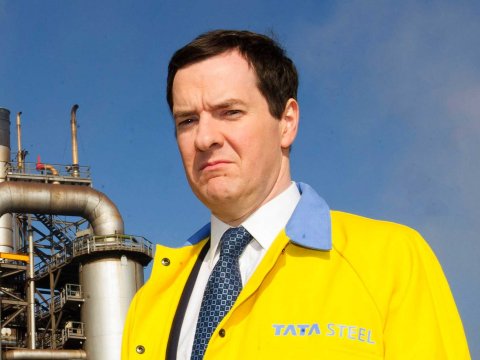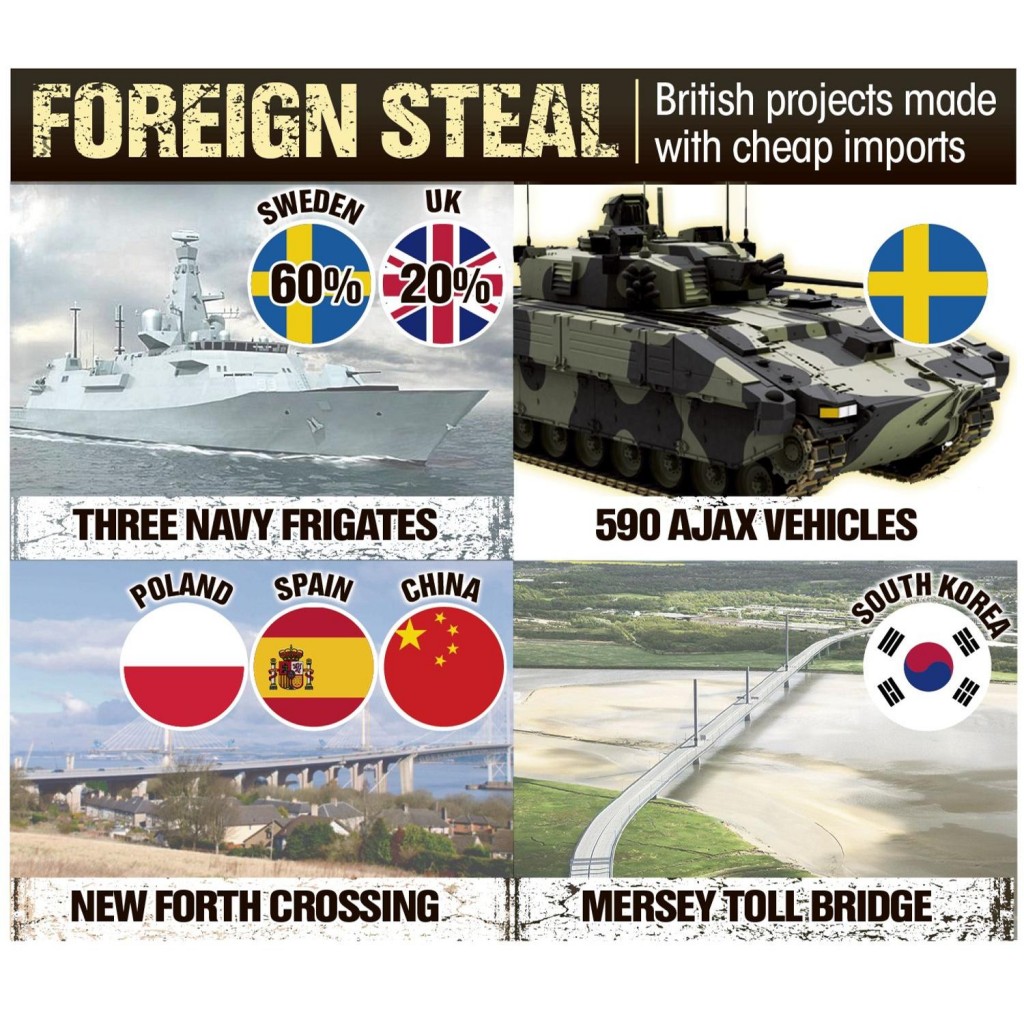Late last month a friend and I set off on a 1500 mile pilgrimage, in a Reliant Robin, to the home of Scottish whisky – Islay. Having managed to visit all 8 distilleries on the island, here is a brief account of our adventures plus a personal reflection on the best Islay has to offer.
Your first question might be… why a Reliant Robin. M y response would be ‘why not’. If your travelling the length of Britain on a road trip then why not choose a classic icon of British motoring.
y response would be ‘why not’. If your travelling the length of Britain on a road trip then why not choose a classic icon of British motoring.
Tony and I had (somehow) negotiated a week away from the wives and children to fulfil a real bucket-list ambition. We set off on the Friday evening with the plan of wild camping the whole week (wild camping being in a tent without organised campsites and other such luxuries).
We gave ourselves plenty of time, in case the 30 year old car struggled with the mileage, as our ferry left from the port of Kennacraig at 6pm on the Saturday. We made great progress, slept briefly in some guys field and were awoken to the sound of shotgun fire at around 6am. Not wishing to pick buckshot from Tony’s behind for the remainder of our journey we decided to scratch our camp in a hurry and scarper. Luckily, when on the island, people were far happier for us to camp wherever we wanted.
The second leg of our route saw us pass Loch Lomond and Loch Fyne both of which feature some of the most beautiful scenery I have ever witnessed.
We made the ferry in excellent time and took the two and a half hour crossing in comfort. I have to say that the Caledonian MacBrayne ferries are rather nice and the customer service is exceptional. Being from the South East of England I am always taken aback, when venturing beyond the Watford Gap, by how pleasant people can be.
The island itself is just 25 miles long by 15 miles wide and so it is somewhat interesting to think of there being no less than 8 whisky producers in such close proximity to each other. We arrived on the island at around 8pm. It was still light and so we set off to find our first camp. Having no local knowledge we naively scanned a map on the ferry and decided that we would head to a large stretch of wilderness called The Oa. This whole area turned out to be a bog requiring the Robin to undertake some serious off-roading. We headed back to civilisation. Darkness quickly engulfed us and we drove around aimlessly for 2 hours before, more by luck than judgement, we stumbled across a place at which a number of caravans had pulled up. That was good enough for us. We pitched our tents in the dark, set a quick fire, wolfed down down some barely cooked burgers and slept like babies.
 When morning came I peered out of my tent to see that we had stopped by a small stony beach with a red sun rising over the water. What a wonderful way to wake up. Over the coming days we got to grips with the terrain on the island and set to camping close to a number distilleries and then walking to them. We quickly got into a rhythm of seeking a new camp in the morning and visiting distilleries in the afternoon before cooking on an open fire and watching the stars in the evening.
When morning came I peered out of my tent to see that we had stopped by a small stony beach with a red sun rising over the water. What a wonderful way to wake up. Over the coming days we got to grips with the terrain on the island and set to camping close to a number distilleries and then walking to them. We quickly got into a rhythm of seeking a new camp in the morning and visiting distilleries in the afternoon before cooking on an open fire and watching the stars in the evening.
Here is my personal view of the distilleries and their general hospitality. I have tried to put them in order from my favourite to my least favourite…because in reality I enjoyed them all.
1. Laphroaig
We took the basic tour at Laphroaig which, like all of the distilleries, this consisted of a walk around the facilities, looking at the stills and a talk about their history. The basic cost at Laphroaig was £6. We arrived at around 12pm, the tour was 45 minutes and we left just after 4pm. Needless to say while the lady behind the bar was plying us with free samples we were going nowhere. I contest that that day I spent the best £6 of my life. However, when we were given a bottle of water each and told to come back tomorrow we felt our welcome had been worn out.
For me, Laphroaig make the best whisky and strangely, having sampled the whole range, their standard 10 year old is still my favourate.
2. Bruichladdich
Again, we did the tour at a cost of £5 and spend the whole afternoon there. There visitors centre is extremely comfortable and informal and has by far the nicest atmosphere. Again, after ‘sampling’ their whole range a couple of times we were politely told ‘gentlemen, this is not a pub’ and so we took our leave.
A real highlight of of this distillery, and possibly the whole trip, were their range of super peaty whiskies called Oxtomore. At nearly 64% it is a fiery tipple but absolutely fantastic. In my weakened state I very nearly parted with the hefty £300 for a bottle but thankfully Tony pulled me away before I could get my credit card out.
3. Kilchoman
If there is one distillery that you are likely to miss it would be Kilchoman. It is a bit off the beaten track but to my mind, it is the most honest. It is not as glitzy and not as well set up for visitors as some of the others but still well worth a visit. It is the only distillery on the island still owned by islanders and not a big corporation. In fact, we happened to bump into one of the of sons of the owners who was kind enough to give us a personal tour.
4. Ardbeg
Ardbeg is located on a massive site and very accommodating. However, they seem to have put their focus into creating a restaurant feel, which is a little off-putting. However, their whiskies are fantastic and they remain well worth a visit.
5. Bowmore
Located in the small town of Bowmore the visitor centre is very slick. A modern white-walled and glass affair with a modernist water feature in the entrance. It was a little too polished for me but the staff were wonderful.
Caol Ila has a tiny visitor centre which is distinctly uncomfortable. Situated in an 1970’s monstrosity of the building the tour shows an operation more industrial in nature that the rest. However, if you look beyond the building, it is set (like a bond villains layer) in a stunning cove on a beach overlooking a wonderful view.
Surprisingly I found the whisky to be a tad disappointing but then I suppose we had been spoilt over the preceding few days.
7. Bunnahabhain
This distillery is a real trek and when you arrive is very different from the others. It feels like a Victorian prison/workhouse with it’s imposing grey buildings encircling a large courtyard. It felt like the visitor experience was very much an afterthought and the whiskey was, to my taste, pretty awful.
8. Lagavaulin
Along with Laphroaig and Ardbeg, Lagavaulin are on a recently constructed distillery walking route. This makes access to and from the sites extremely easy. The whole route is about a 5 mile round trip with the final mile feeling like reaching the summit of Everest. However, Lagavaulin provided a very disappointing visitor experience. While their visitor centre is decorated in a charming colonial style, the staff seem tainted by disillusionment. Without exception, all of the other distillery staff had been welcoming and extremely passionate about the product but here it felt the fire had long been exhausted. While Lagavaulin might be one of the best known brands, their whiskey was also not up to the standard of the others. We arrived in their 200 anniversary year expecting a jubilant atmosphere and were sorely disappointed. We were also given a sample of their special anniversary bottling… which was awful.
So, after 5 days, 8 distilleries and countless drams it was time to leave the island. We were welcome, we saw some of the most stunning views possible anywhere in the world and were truly spent. Our journey back in our trusty Reliant was less eventful that our arrival, our mission to simply eat up the miles. We pushed the Robin to it’s limits and made home in less than 9 hours of almost solid driving.
We had a absolutely wonderful time but the real star of the show was the trusty Robin Reliant who defied it’s doubters to make the whole journey without missing a beat. Everywhere we went the plucky little car was met with smiles and waves. We attained, by virtue of the car, celebrity status on the island and I am sure that contributed to peoples pleasantness to us. It is however telling that, as soon as we reached Essex we were immediately met by, on more than one occasion, a number of white van men hanging out of their windows imitating the milking of cows and calling us bankers (or something to that effect). Welcome home, I though to myself.
- James













